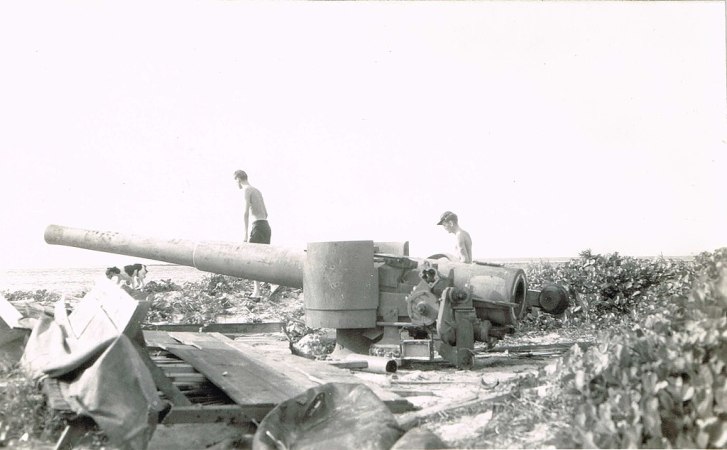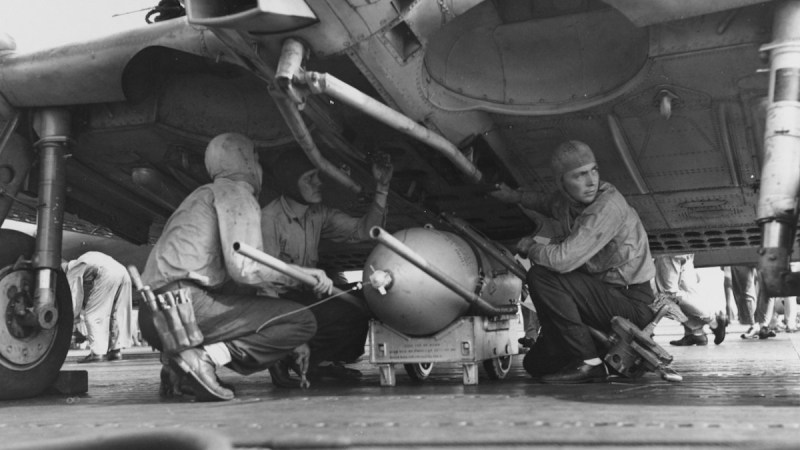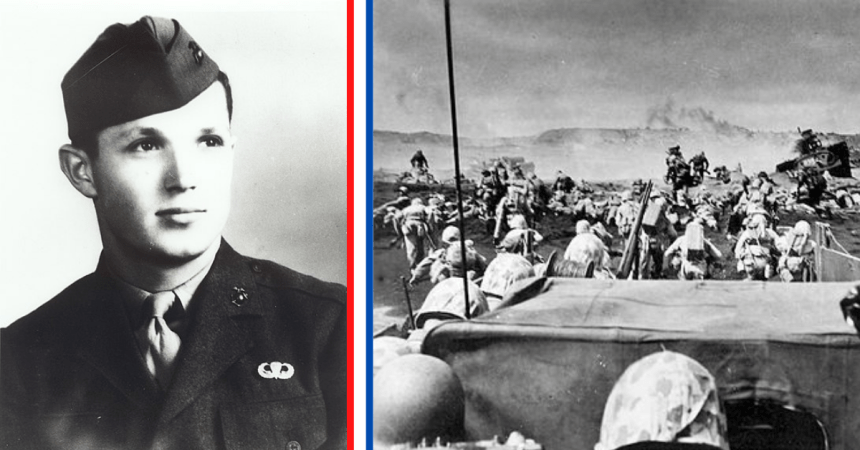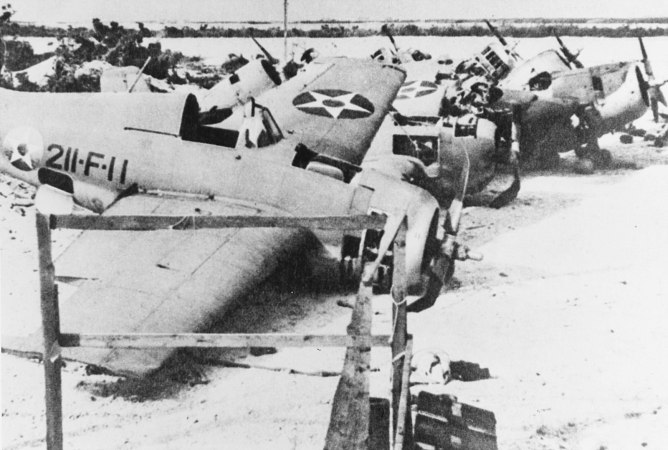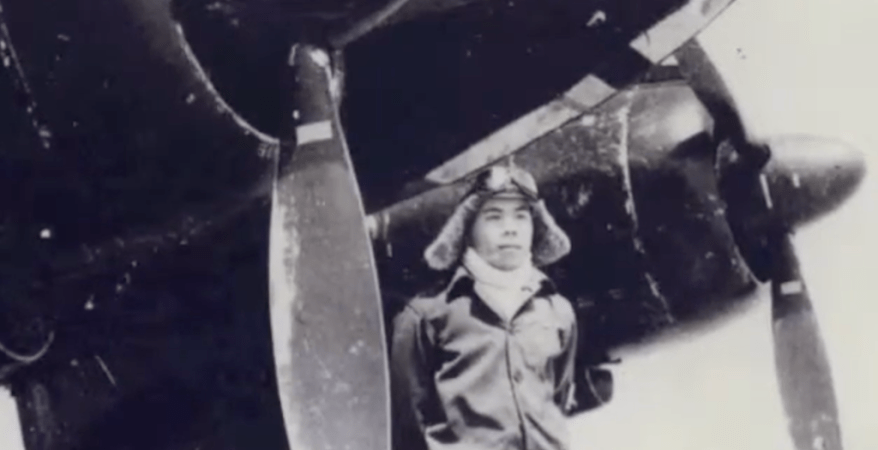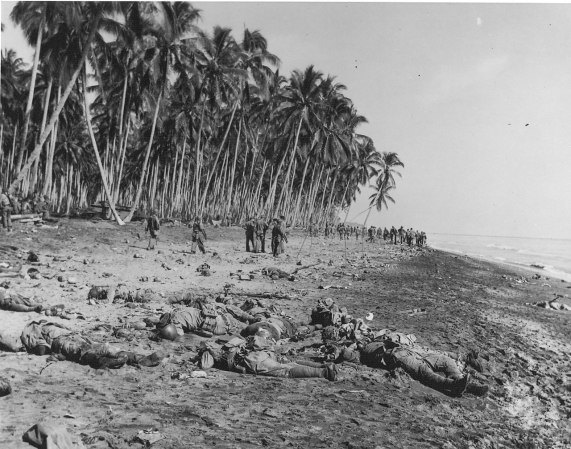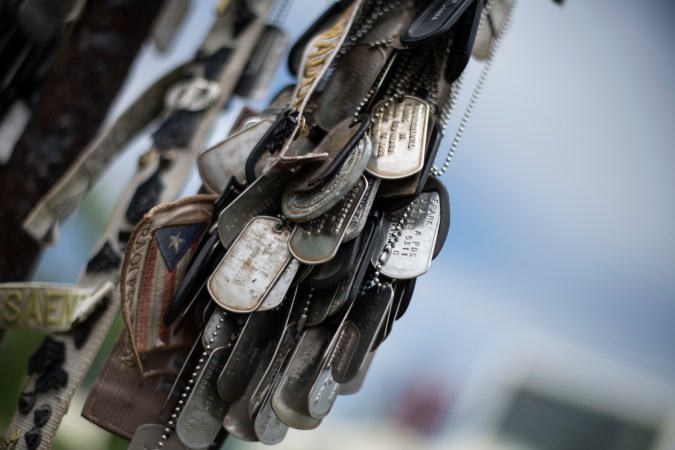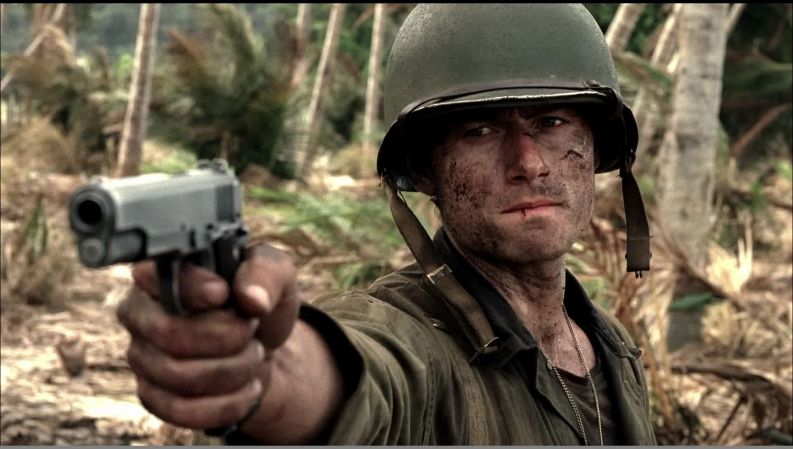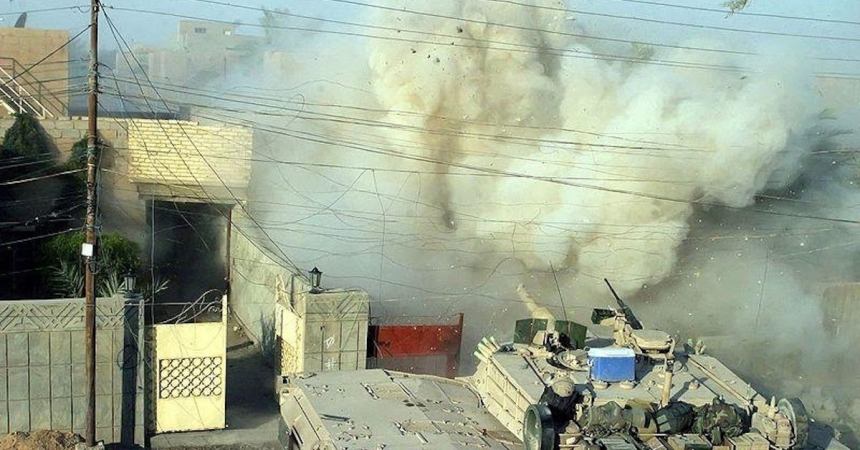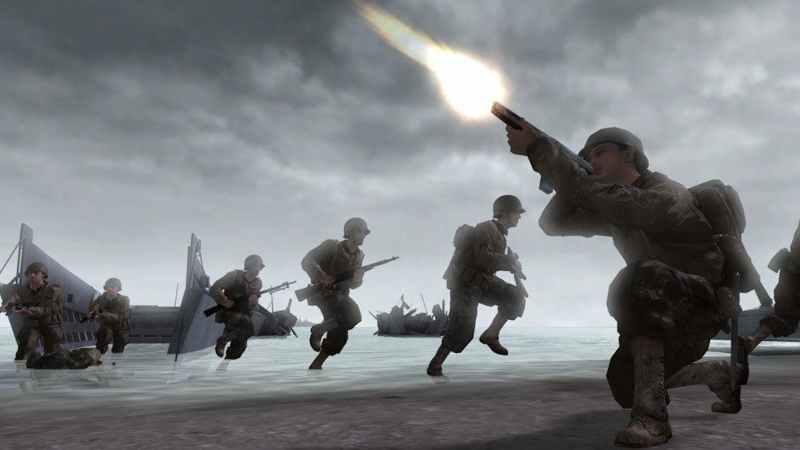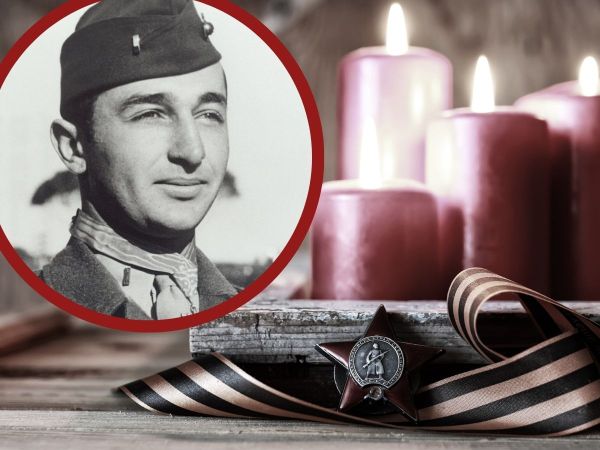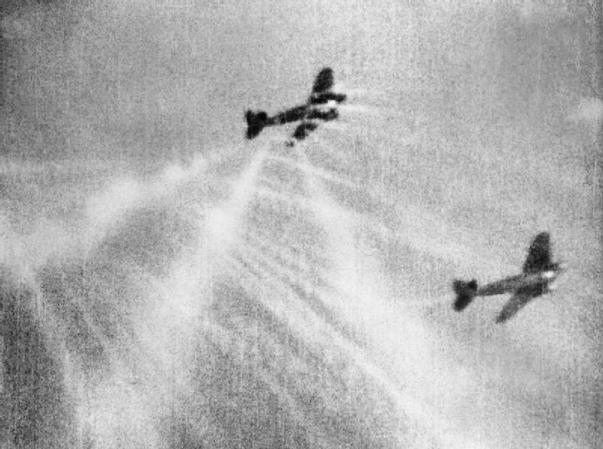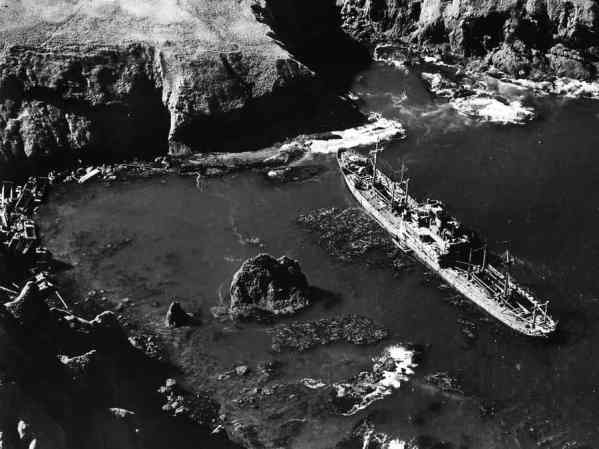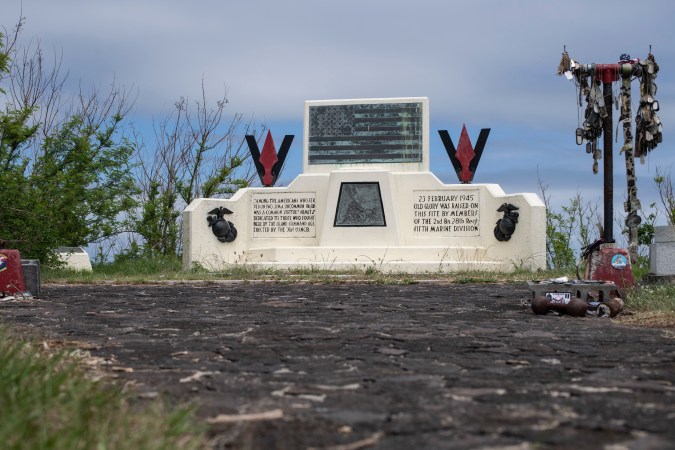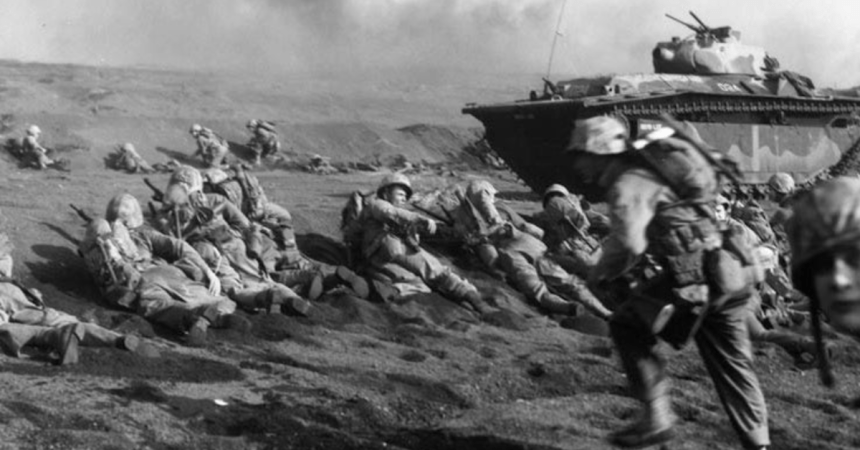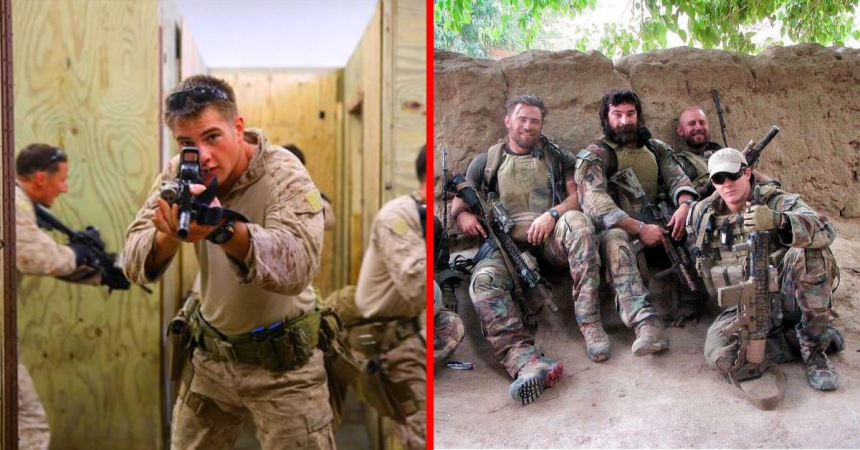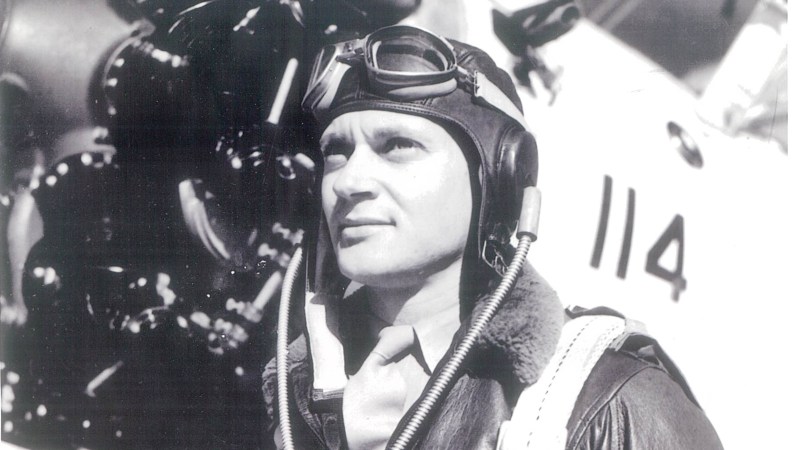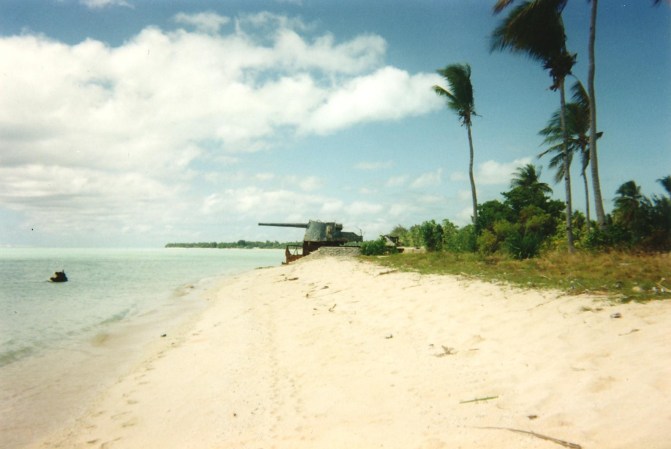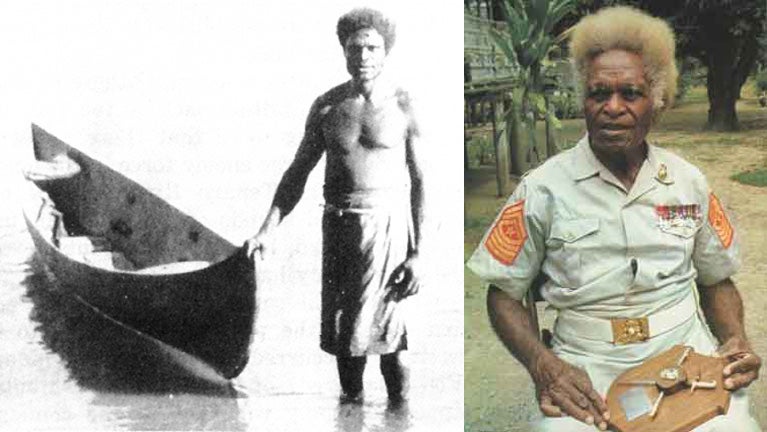After relieving the 1st Marine Division and securing the defeat of the Japanese at Guadalcanal, the 2nd Marine Division prepared for the first major assault of the Pacific island-hopping campaign. Their target was a small coral atoll called Tarawa. The Japanese garrison on Betio, an island of the Tarawa atoll, stood in the way of communications lines between Hawaii and other objectives in the Central Pacific.
The operation, codenamed Galvanic, combined an assault by the 27th Infantry Division on Makin Island and a later landing on Apamama would clear the Gilbert Islands and, according to Admiral Nimitz, “[knock] down the front door to the Japanese defenses in the Central Pacific.”

Unfortunately for the Marines, their earlier diversionary raid against Makin Island had alerted the Japanese to the importance of the Gilbert Islands. They had fortified Betio accordingly.
The island was small, only about three miles long and no wider than 800 meters, but within that confined space the Japanese had constructed some 500 pillboxes, four eight-inch gun turrets, and numerous artillery and machine gun emplacements. A coral and log seawall ringed most of the island and 13mm dual-purpose anti-boat/antiaircraft machine guns protected the most likely approaches.
The impressive defenses led one Japanese officer to remark “a million Americans couldn’t take Tarawa in 100 years.”

The Marines were bringing one division. Leading the way would be the 2nd Marine Regiment under Col. David Shoup. Aimed at Red Beach 1 and leading the charge for the regiment were the men of 3rd Battalion, 2nd Marines. To their left, hitting Red Beaches 2 and 3, were their sister battalion 2/2 Marines, and 2nd Battalion, 8th Marines.
On the morning of Nov. 20, 1943, after a scant three-hour naval bombardment, the Marines headed for shore.
Immediately issues began to develop. First, the naval gun fire ceased at approximately 0900 while the Marines in their Landing Vehicles, Tracked (LVT) were still 4,000 yards off shore. Second, an unexpected neap tide had failed to cover a reef in the lagoon. The LVTs could easily crawl over it, but the Higgins boats carrying later waves would not have sufficient depth to clear the reef.

As the Marines approached the shore, they realized the naval bombardment had been rather ineffective. They started taking heavy fire from the Japanese as they made their way across the lagoon. One Marine recalled a Japanese officer holding a pistol and defiantly waving the Americans ashore.
The Marines of the Amphibious Tractor Battalion battled back, blasting over 10,000 rounds at the Japanese from their .50 caliber machine guns. But the exposed gunners paid a heavy price.
Finally, at 0910, LVT 4-9 carried the first Marines from 3/2 onto the beaches of Betio. The driver slammed it into the seawall in hopes of scaling it but stalled out.
A Marine sergeant jumped up to lead his men into the fray and was immediately cut down by gunfire. The remaining Marines jumped out and assaulted several Japanese positions before they all became casualties.

As the successive waves of the 3rd Battalion landed they fared even worse. Fully alerted to the incoming Americans, Japanese gunners now targeted the approaching LVTs. The unarmored vehicles offered little protection and many were sunk or damaged beyond repair.
The initial assault companies, K and L, suffered over 50 percent casualties in the first two hours of the assault. The following waves were in even more trouble. Embarked in landing craft, they had no choice but to unload at the reef due to the neap tide. This meant wading ashore some 500 yards under heavy fire.
This was how the men of L company under Major Mike Ryan made it ashore. Rather than leading his men directly into the carnage of Red Beach 1, Ryan followed a lone Marine he had seen breach the seawall at the edge of Red Beach 1 and Green Beach, the designated landing area that comprised the western end of the island.

Ryan’s landing point caught the eye of other Marines coming ashore who diverted towards his position.
As more Marines from successive waves and other survivors worked their way to the west end of the island Ryan took command and began to form a composite battalion from the troops he had. These men would come to be known as “Ryan’s orphans.”
Adding to the chaos for 3/2 was the fact that their commanding officer had still not landed. Seeing his assault forces shattered on the beach and following waves cut down in the water he radioed Shoup for guidance. When Shoup directed him to land at Red 2 and work west he simply replied, “We have nothing left to land.”
On the beach, the Marines of 3/2 continued to fight for their lives. After managing to wrangle two anti-tank guns onto the beach they realized they were too short to fire over the seawall. As Japanese tanks approached their positions cries went up to “lift them over!” Men raced to get the guns atop the seawall just in time for the gunners to drive off the Japanese tanks.

Meanwhile Maj. Ryan’s composite battalion of 3/2 Marines and others had acquired a pair of Sherman tanks. Learning on the fly, the Marines coordinated assaults on pillboxes with infantry and tank fire. This gave the Marines on Betio their most significant advance of the day as Ryan’s orphans were able to penetrate 500 meters inland.
3rd Battalion was badly mauled in the initial assault on Betio. Surrounded by strong Japanese fortifications the survivors on Red Beach 1 would fight for their lives for the remainder of the battle.
Ryan’s orphans made a significant contribution to the battle in opening up Green Beach so men of the 6th Marine Regiment could come ashore to reinforce the battered survivors.
Now reformed, 3/2 would take part in one of the final assaults to secure the island helping to reduce the dedicated Japanese fortification at the confluence of Red Beaches 1 and 2. The island was declared 76 hours after the first Marines had landed.

The Marines suffered over 1,000 men killed and over 2,000 wounded.
Col. David Shoup summed up the experience, “with God and the U.S. Navy in direct support of the 2d Marine Division there was never any doubt we would get Betio. For several hours, however, there was considerable haggling over the exact price we were to pay for it.”



